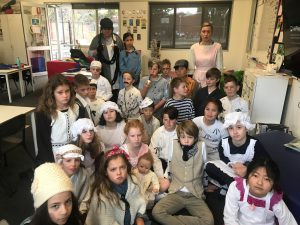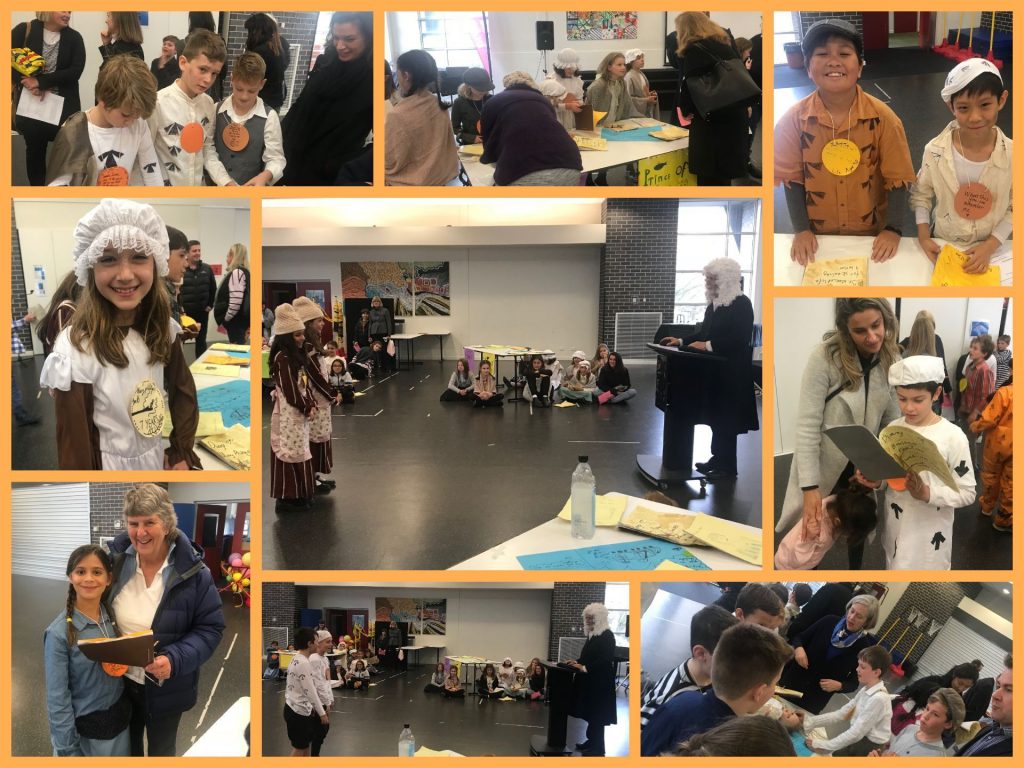As part of our new Integrated topic this term ‘First Contacts,’ we are learning about the impact of the European Settlement on Indigenous Australian culture.
Have you ever wondered what traditional life was like for the Wurundjeri people (the Aboriginal tribe of the Melbourne area)? Well, take a trip to Royal Botanic Gardens, Cranbourne and you are sure to learn lots of new information!
We spent the first half of the day with our guide Bridget, who guided us through 3 activities:
-
Indigenous tools – we learnt a lot about how Indigenous people used materials from the bic (land) to make tools for hunting, cooking and clothing. Cordials made from nectar, bags made from reeds, fire sticks and spear throwers.
-
Indigenous art – ochre is a type of paint used to tell and pass on stories through art. We learnt how to make the red and orange paint from rocks and left our own mark at the gardens…until the next rainfall that is!
-
Indigenous food – There were so many wonderful smelling plants which excited our senses as we walked through the garden. We heard how the indigenous people used various plants for water, seasoning such as salty pig face and much more. We even drank some delicious warm lemon myrtle tea!
We then finished the day off with a scavenger hunt throughout the gardens with various challenges which brought out the competitive and creative side in many of us – particularly the adults! Challenges included: make a stick sculpture, sniff out the plant with the best smell and hug a tree with smooth bark.
Be sure to check our individual student blog pages to see the group research videos that 4T have created on their own Indigenous culture inquiry questions.

Royal Botanic Gardens, Cranbourne 2019
4T, you can find these photos and more in our shared folder.
What was your most interesting part of the day at Cranbourne Gardens?
When 4T logged onto their blogs today, something very alarming and strange had happened.
Their content was there, but someone else’s name was on the title. Someone had claimed their own work as their own!

‘But I wrote that!’ Lucas exclaimed

‘I don’t know what’s going on,’ Esther said confused.
4T were outraged! But unfortunately this happens on the internet more often than you think. People copying other people’s work or images and pasting them into their own projects. That’s not fair!
As we begin our research for our extreme weather event project, this led to a very important discussion about why it is so important to give credit to someone else’s work when you have borrowed a picture or used their website or book to assist you in your research.
What is plagiarism?
Why is it important to credit the work that you use?
How do you credit someone else’s work?
“Goodmorning M’am.”
“I’ve got the scurvey!”
“Watch out for them giant rabbits!”
The 4T students were nowhere to be seen on Monday, in their place were dirty, untrustworthy First Fleet convicts! During the day, the convicts participated in many different activities.

4T Convicts
They learnt calligraphy, re-enacted scenes from the 18th century and created their own love tokens. Outside on Cluny, students mapped out the actual size of one of the First Fleet ships. Safe to say we were all mystified as to how they fit so many convicts on ships that were not that big!

A variety of activities throughout the day
In the afternoon, the convicts were relieved from their duties for a short time to share their expertly written convict diaries and other learnings throughout the term with the free settlers (parents). Some convicts were even sentenced on the spot by Magistrate Mitchell.

Our Meet the Convict Afternoon
Be sure to check out the individual student blogs for their own recounts of Convict Day.
What is the most interesting thing you learnt about convicts?
As part of our new Integrated topic this term ‘First Contacts,’ we are learning about the impact of the European Settlement on Aboriginal culture.
Have you ever wondered what traditional life was like for the Wurundjeri people (the Aboriginal tribe of the Melbourne area)? Well, take a trip to CERES environmental park and you are sure to learn lots of new information!
On Monday, all the Year 4 classes visited CERES and participated in four different activities related to traditional Aboriginal culture, including:
- Bush Tucker, where we learned about how Aboriginal people used plants for food and medicine.
- A Merri Creek history walk, where we compared the landscape now to what it might have been prior to colinisation and looked at the positive and negative impacts of humans on nature.
- Fossils and Rocks, where we learnt about igneous, sedimentary and metamorphic rocks. We discussed how they are created and we looked at fossile more than 100 million years old!
- Storytelling, where we learnt about the importance of storytelling through art and dance and acted out the traditional story of Tiddalick the Frog.
Look at our individual student pages to learn more about our Aboriginal Culture research projects.

What was the most interesting thing you learnt at CERES?
What is something you are still wondering about and would like to explore further?
After a term of questioning, researching, clarifying, publishing and presenting, our First Contacts Integrated Unit has come to an end.
During the unit we explored the following questions:
-
Why did the great journeys of exploration occur?
-
What was life like for the Indigenous Australian people before the arrival of the Europeans?
-
Why did the Europeans settle in Australia?
-
What was the nature and consequence of contact between the Indigenous Australian people and early traders, explorers and settlers?
We even researched our own family history to learn our own immigration stories. Watch our video to see the origins of our families and the year they arrived in Australia.
4T’s 2017 Immigration story
What is your family’s immigration story and what was their reason?






